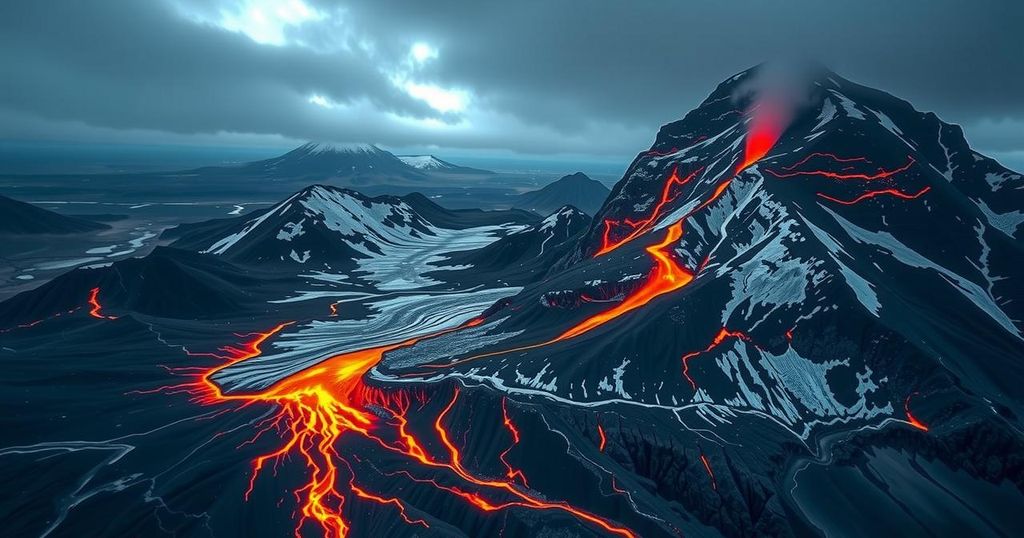Emerging research suggests that the accelerated melting of glaciers due to climate change may trigger a rise in volcanic eruptions, particularly in regions like Iceland where many volcanoes are ice-covered. A team from the University of Iceland is leading this investigation, exploring how diminishing glacier mass influences magma formation beneath volcanoes. The implications are serious, with potential contributions to rising sea levels and increased carbon emissions from volcanic activity, particularly concerning areas like the West Antarctic Ice Sheet.
Recent scientific inquiries have unveiled a concerning possibility regarding climate change: the potential for accelerating volcanic eruptions as glaciers continue to melt. A consortium led by the University of Iceland, comprising twelve research institutions, is dedicated to investigating whether the ongoing effects of climate change might result in heightened volcanic activity in regions where ice-covered volcanoes reside. According to reports, experts suspect that the conditions necessary for a notable increase in eruptions are increasingly aligning, particularly as over half of Iceland’s volcanoes lie beneath ice. The situation poses significant global risks due to the carbon dioxide emitted during volcanic eruptions. Several volcanoes are situated beneath the West Antarctic Ice Sheet, potentially exacerbating ice melt and elevating sea levels. The foundational theory guiding these studies is that glaciers’ considerable weight exerts a downward pressure on the Earth’s crust and mantle, which suppresses the upward movement of magma from below. However, as glaciers retreat, this pressure diminishes, facilitating an environment where more magma can form, thereby increasing the likelihood of volcanic eruptions. One notable US volcanologist has compiled a list of the most perilous volcanoes located beneath glaciers, evaluating factors such as the ice volume adjacent to each volcano, the frequency of past eruptions, and the population density within a 30-kilometer radius. This analysis indicates that seven out of the top ten volcanoes identified are located in the Andes region of South America. In Antarctica, British volcanologist John Smellie reported the presence of two to three acknowledged active volcanoes, although he suggests there could be between 100 to 150 total. Satellite data have revealed that Antarctica is currently losing over 150 billion metric tons of ice annually. Smellie cautioned that if climate change were to instigate a new epoch of eruptions in the near future, it would significantly accelerate the depletion of the continent’s ice reserves and contribute to rising sea levels, threatening major coastal urban centers globally.
The topic of potential volcanic activity spurred by climate change emerges from the understanding that climate alterations, particularly global warming, have significant repercussions on geological phenomena. The interplay between the mass of glaciers and volcanic activity is pivotal; as glaciers melt, the shift in pressure can influence magma formation and movement. This connection, explored through interdisciplinary a collaborations, encourages evaluation of both immediate and longer-term impacts on climate and geologic stability, emphasizing the urgency of scientific inquiry in this domain.
The intersection of climate change and volcanic activity elucidates a pressing issue with potential global ramifications. The research underscores the need for continuous monitoring of glacial and volcanic dynamics, reinforced by the understanding that changes in glacial mass can profoundly influence volcanic behavior, with possible consequences including increased eruptions and subsequent ecological and socio-economic impacts. As climate change progresses, the urgency to study these interactions becomes ever more critical to mitigate potential risks.
Original Source: www.asiafinancial.com







